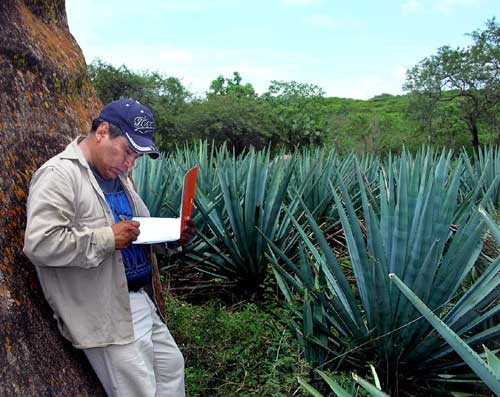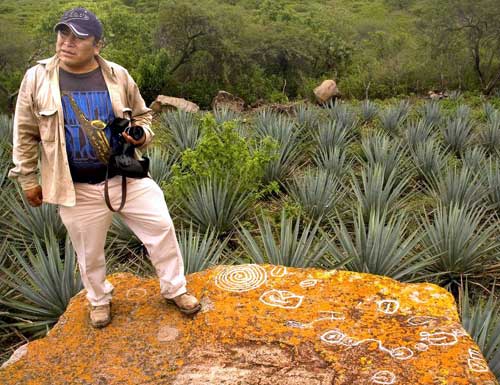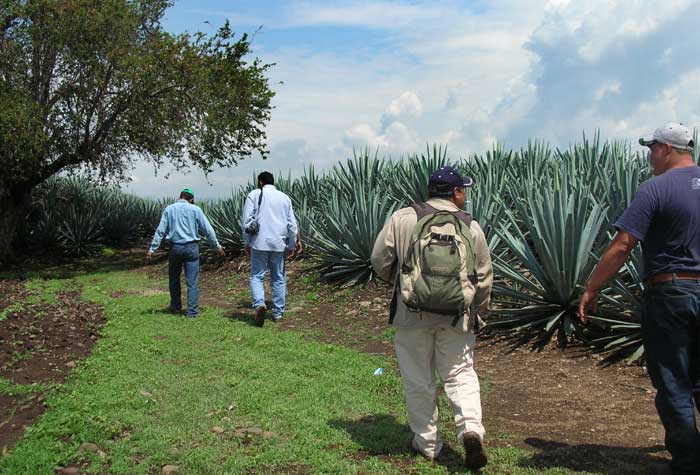|
By John Pint
 Archaeologist
Carlos López Cruz was murdered around 2:00 AM in El Amarillo, a tiny
community in the municipality of Amatitán, Jalisco (40 kms west of
Guadalajara), on May 4, 2013, during a local religious festival. Archaeologist
Carlos López Cruz was murdered around 2:00 AM in El Amarillo, a tiny
community in the municipality of Amatitán, Jalisco (40 kms west of
Guadalajara), on May 4, 2013, during a local religious festival.
López,
who died at the age of 47, lived in the Valley of Santa Rosa, where
local people fondly referred to him as “El Arqui.” He was so well liked
in the area that he stated in an interview—shortly before his
death—“It’s true that Santa Rosa is a corridor for Narcos, but I’m not
worried because everybody knows me around here.”
López worked
with the National Institute for Anthropology and History (INAH) and was
at the vanguard of archaeological studies in Western Mexico. He was
also frequently called upon to investigate, evaluate and register newly
found archaeological sites in Jalisco.
Because I am one of those
people who occasionally report such sites to INAH, I had the pleasure
of meeting Carlos López years ago and seeing him in action.
 In
2009 I was shown a large rock—covered with mysterious
petroglyphs—located in the middle of an agave field near Tuxcueca. The
flat-topped rock lay within view of Lake Chapala’s south shore and had
probably been situated at the water’s edge in the past. I called INAH
and suggested that this rock, together with several nearby, may have
been used for ceremonies in ancient times. The archaeologist they chose
to register the site was Carlos López, who accompanied me to Tuxcueca,
took meticulous measurements and numerous photos and later met with
local officials in an attempt to get them to protect the site. In
2009 I was shown a large rock—covered with mysterious
petroglyphs—located in the middle of an agave field near Tuxcueca. The
flat-topped rock lay within view of Lake Chapala’s south shore and had
probably been situated at the water’s edge in the past. I called INAH
and suggested that this rock, together with several nearby, may have
been used for ceremonies in ancient times. The archaeologist they chose
to register the site was Carlos López, who accompanied me to Tuxcueca,
took meticulous measurements and numerous photos and later met with
local officials in an attempt to get them to protect the site.
I
was impressed with the Arqui’s unassuming “rockside manner.” Although
thoroughly knowledgeable in his field, he was always willing to listen
and to explain things in layman’s terms, and had a great sense of humor.
Little
did I suspect that López had been carrying out the work of an
archeological pioneer. “During the decade of the 90’s,” says Teuchitlán
archaeologist Sean Monti Smith, “Carlos López worked with Dr. María
Teresa Cabrero in Bolaños Canyon to establish contacts between North
Central Jalisco and South Zacatecas, to understand cultural dynamics
previously unknown. More recently, he was working in the Río Santiago
Canyon and had found the first important sites of the Atemajac
tradition in this area. One of his principal interests was the route
that the Conquistadores followed to reach Etzatlán during the first
years of Spanish occupation of Jalisco. This is a subject no one else
knew anything about. Carlos López was a true researcher whose spirit
led him to visit places no one had ever explored before.”
Regarding
López’ recent work, Dr. Cabrero commented, “Carlos had his own project
along the Santiago River Canyon. During various field trips he managed
to locate over 100 archaeological sites there of great importance and
size. He was truly a pioneer in this area and his work was one of the
most important in the state of Jalisco. Unfortunately, his
investigation was left unfinished. Even though he gave many conferences
on his discoveries, he never published anything.”
Dr. Cabrero
goes on to mention that, although she worked closely with López on many
projects, and would like to publish his papers, INAH Jalisco has
refused to allow her access to them, saying that the information
belongs exclusively to them. Whether INAH ever publishes the material
remains to be seen. The organization has been strongly criticized by
many archaeologists, including the late Phil Weigand.
There is a celebrated fish called Tapatia
occidentalis
which lived in the Santiago River about nine million years ago. This
fish was about an inch long, a member of the family Goodeinae. They are
live-bearing fish and many of their modern descendants live in the
Teuchitlán River, where they are being slowly but surely exterminated.
Once again it was Carlos López who registered with INAH an amazing find
of countless fossilized Tapatias. These fossils establish the minimum
age of the Goodeinae as late Miocene and are the oldest fossils of any
kind found in Jalisco.
I asked archaeologist Joseph Mountjoy for
his recollections of Carlos López. He says, “I met Carlos López many
years ago at a Mesa Redonda of the Mexican Anthropology Society in
Querétaro. We both wound up sleeping on the floor of a room
at a
hotel because there were no local accommodations anywhere else when we
arrived. I found Carlos had a great sense of humor and as
there
was no TV, we passed the time joking, and laughing a lot till it was
obvious that the other companions on the floor were ready to
sleep. As I became familiar with his excavation work on shaft
tomb and related habitational/ceremonial remains I was impressed with
the quality of Carlos' fieldwork—first class.”
Mountjoy and
López ended up carrying on a long-term dialog on petroglyphs, their
recording and their interpretation. Concludes Mountjoy, “As one gets
older the number of archaeological sites recorded or sherds studied
becomes less and less important while the friendships formed in the
process is increasingly more treasured. I was fortunate to
have
enjoyed Carlos' humor, friendship and wisdom, although as it turned
out, for far too short a time.”
Carlos López’ good disposition
and willingness to help his fellow man seem to have played a key role
in his tragic death. According to a source who lives in Santa Rosa
Valley (and who wishes to remain anonymous because the area is
controlled by Drug Traffickers), an argument broke out in a Cantina
(bar) in El Amarillo and it was López who stepped between the
antagonists, attempting to calm them down. Suddenly a gun appeared,
shots were fired and two men fell dead. One was Victorino Ríos Campos,
who worked in a nearby tequila distillery and the other was Carlos
López. A woman was also wounded in the shootout. Local people feel that
if justice is ever done regarding this crime, it will be “Narco
Justice,” since there seems to be no other law in the Santa Rosa
Valley.
The people of Mexico have lost more than an archaeologist; they have
lost a pioneer.

Good-bye, Carlos!
|

